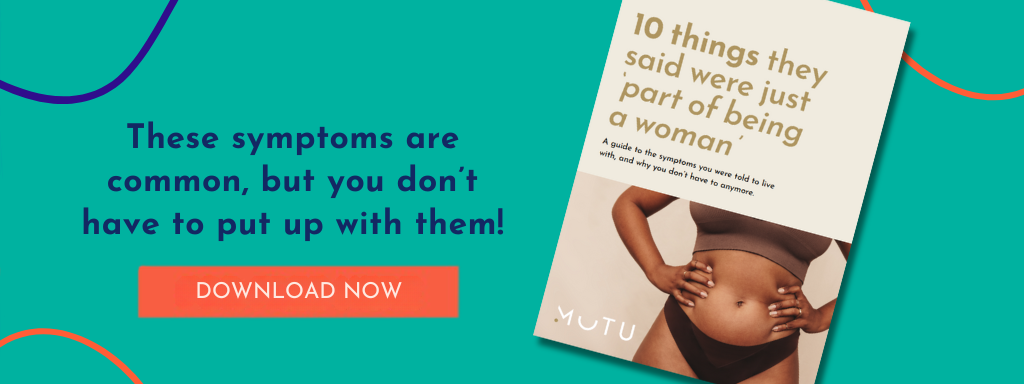Why C-Section Recovery Isn’t Just About the Scar — It’s About Core and Pelvic Floor Function
You had a C-section. Maybe recently. Maybe years ago. You were told to rest, to “take it easy.” The scar healed. The baby grew. But you still feel weak in your core. Still leaking. Still bracing every time you lift, sneeze, or try to move with confidence.
You’re not broken. You’re not imagining it. You just haven’t had c-section pelvic floor rehab.
And that’s not on you. It’s a missing piece of standard postpartum care — one that far too many women are left without. Let’s talk about why it matters, what recovery should actually look like, and why time alone isn’t enough to restore strength or function.
Why C-Section Pelvic Floor Rehab Matters More Than You Were Told
There’s a misleading myth still circulating: “You had a C-section, so your pelvic floor was spared.” But it’s simply not true.
Pregnancy itself is what changes your pelvic floor — not just vaginal delivery. Carrying a baby for nine months means:
- Ongoing pressure on your pelvic organs
- Hormonal changes that soften ligaments and connective tissue
- Postural shifts that alter how your muscles align and function
Even without vaginal trauma, your pelvic floor was stretched, loaded, and impacted throughout pregnancy. Then add major abdominal surgery, and you’ve got deep tissue trauma, scar formation, and compensatory patterns that further disrupt how your pelvic floor and core work together.
Yet almost no one is offered c-section pelvic floor rehab postnatally. Six-week sign-off… and you’re left to figure it out on your own.
Common Symptoms That Signal Your Recovery Isn’t Complete
If you’re experiencing any of the following, they’re not random — they’re signs your body still needs support:
- Leaking urine when laughing, coughing, or exercising
- A heavy, dragging sensation in your pelvis
- Pain during sex or while standing for long periods
- A feeling of weakness or “nothingness” in your abdominal wall
- Poor posture or back pain from bracing unconsciously
None of these are rare. But they’re rarely linked back to core and pelvic floor dysfunction after a surgical birth, and even more rarely treated with structured, specialist rehab.
This is where c-section pelvic floor rehab steps in: to restore not just strength, but coordination, pressure management, and functional movement.
Why Your Core Might Still Feel Weak — Even Years After a C-Section
Your scar healed. But your core never reconnected.
Here’s why: a C-section cuts through layers of your abdominal wall — including skin, fascia, and muscle. Nerve pathways are disrupted. Your core muscles go offline. This includes the transverse abdominis, diaphragm, pelvic floor, and deep spinal stabilizers — a system that relies on breath and alignment to function properly.
When no one helps you retrain this system postnatally, it doesn’t just “come back” on its own.
That’s why so many women describe:
- A bulge or dome when they sit up
- Difficulty activating their core, no matter how many exercises they try
- That “unsupported,” floppy feeling through the torso
- Exhaustion from trying to brace, squeeze, or “work harder” without results
This is not a strength issue. It’s a signal issue. And c-section pelvic floor rehab restores that connection — safely, functionally, and with your body’s trauma history in mind.
What Real Recovery Looks Like — Beyond Kegels and Crunches
The solution isn’t more sit-ups or tighter leggings. And it’s definitely not endless kegels.
Real rehab means rebuilding from the inside out. It looks like:
- Breath-led movement: Inhale to soften the pelvic floor, exhale to engage deep core muscles gently.
- Stacked posture: Head over ribs over pelvis. When your body is aligned, your muscles can activate without strain.
- Functional movement: Exercises that restore pressure management and reflexive control — so your core and pelvic floor engage during real-life tasks.
This is where C-section pelvic floor rehab changes the game: you move, lift, walk, and even sneeze with confidence, because your system is once again coordinated.
But Isn’t It Too Late to Start?
Absolutely not. It doesn’t matter whether you’re weeks or years postpartum.
Your body is incredibly adaptable, but it needs the right cues. Nervous system pathways can regenerate. Muscles can relearn. And your breath can retrain your core. With the right guidance, outcomes can change at any stage.
So, whether you’re a brand-new mum or years down the line and still saying “my core just doesn’t feel right,” c-section pelvic floor rehab is the place to start.
What Happens When You Rebuild Connection
When you stop compensating and start connecting, everything shifts:
- You leak less — or not at all
- You feel more stable and upright
- You move without bracing
- You regain confidence in your body
This is not about bouncing back. It’s about rebuilding from where you are, with a system that works, not one that just looks OK from the outside.
The Cost of Doing Nothing? More Than You Might Think
Compensating with poor movement, breath-holding, or avoidance doesn’t just prolong symptoms — it can create new ones:
- Increased risk of pelvic organ prolapse
- Chronic low back pain
- Diastasis recti that doesn’t resolve
- Ongoing fatigue from inefficient movement
Ignoring these issues won’t make them disappear. And pushing through them only reinforces the dysfunction.
That’s why C-section pelvic floor rehab is preventative as well as restorative. It’s how you avoid future issues, not just how you solve current ones.
MUTU Gives You the Plan You Should’ve Had From the Start
At MUTU, we don’t ask you to squeeze harder or bounce faster. We guide you to reconnect. Our programme is:
- Endorsed by physiotherapists and midwives worldwide
- Trauma-aware, adaptable, and gentle
- Built for real-life recovery, not performance
If you’ve ever felt like “my body just isn’t working the way it should,” you deserve a plan that respects what your body’s been through — and helps it move forward.
👇 Start your free 10-day trial when you’re ready. C-section pelvic floor rehab isn’t a luxury. It’s the support you were always meant to have 🧡
Sources
Pelvic floor changes during pregnancy, regardless of delivery mode
- Bo, K., & Frawley, H. C. (2021). Pelvic floor muscle training in prevention and treatment of pelvic organ prolapse. Current Opinion in Obstetrics and Gynecology, 33(5), 379–384.
- Stær-Jensen, J., Siafarikas, F., Hilde, G., Engh, M. E., & Bo, K. (2015). Postpartum recovery of levator hiatus and pelvic floor muscle strength: A prospective cohort study. BJOG: An International Journal of Obstetrics & Gynaecology, 122(6), 840–847.
C-section’s impact on core muscle function and scar adhesion
- Chien, P. F., & Khan, K. S. (2001). What is the evidence for the management of women with caesarean section scar pain? BJOG: An International Journal of Obstetrics and Gynaecology, 108(4), 357–365.
- Baggish, M. S., & Karram, M. M. (2015). Atlas of Pelvic Anatomy and Gynecologic Surgery (4th ed.). Elsevier.
(See: Scar tissue formation, fascial adhesions, p. 542–545) - Goom, T., Donnelly, G., & Brockwell, E. (2019). The Postnatal Rehabilitation Guide. Pelvic Health Physiotherapy UK.
(Open access guide endorsed by the POGP, a professional network of the UK’s Chartered Society of Physiotherapy)
Neuromuscular shutdown and “core amnesia” after surgery
- Arikawa, H., et al. (2020). Dysfunction of transversus abdominis muscle activation and its association with post-cesarean pain and recovery. European Journal of Obstetrics & Gynecology and Reproductive Biology, 247, 117–123.
- Kiesel, K., Butler, R., & Plisky, P. (2014). The Role of Core Stability in Athletic Function. Sports Health, 6(2), 128–134. (Although sports-focused, this study explains how altered neuromuscular control impacts core engagement and spinal stability, directly relevant post-surgically)
Functional rehab strategies: breath, posture, pressure
- Bø, K., & Nygaard, I. E. (2020). Is physical activity good or bad for the female pelvic floor? A narrative review. Sports Medicine, 50(3), 471–484.
- Whittaker, J. L., & Warner, M. B. (2007). Rehabilitative ultrasound imaging: understanding the technology and its applications. Journal of Orthopaedic & Sports Physical Therapy, 37(8), 434–449.
- Mew, R. (2017). Core breathing technique and postnatal recovery. Journal of Women’s Health Physical Therapy, 41(3), 120–126.












